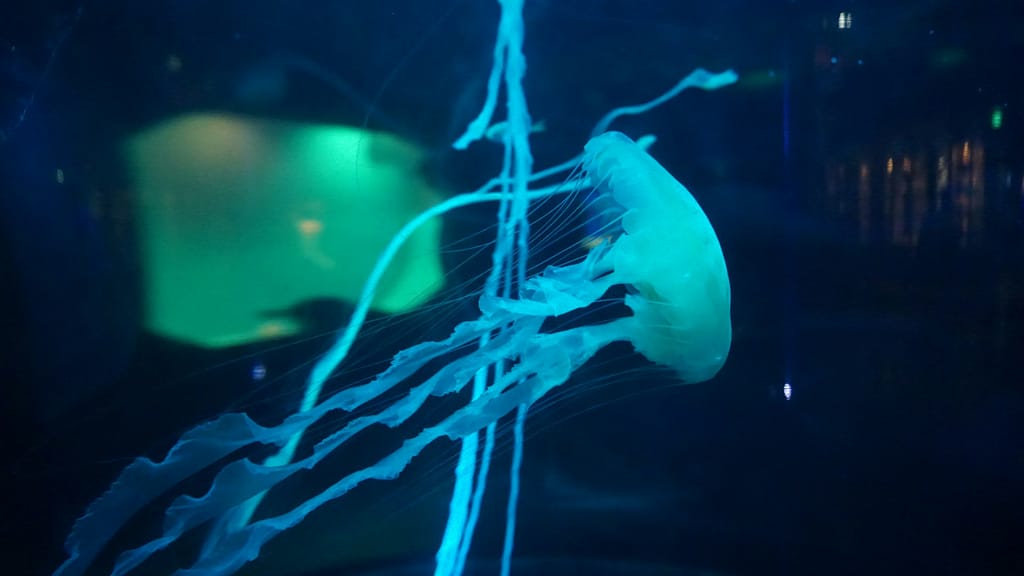Aquaculture, the farming of aquatic organisms, has become a cornerstone of global food production. That said, maintaining optimal water quality is still a constant challenge in the industry, and knowing how to reduce pH in aquaculture is pivotal to a healthy line of operations.
You see, the pH level of water directly impacts the health, growth, and survival of fish and other aquatic species. When pH levels rise too high, it can lead to stress, disease, and even mortality in aquaculture systems.
That’s why we’ll delve today into the importance of pH management, exploring practical methods on how to reduce pH in aquaculture and highlighting how modern technology such as IoT-based solutions can simplify this process!
How to reduce pH in aquaculture: why does it matter?

pH is a measure of the acidity or alkalinity of water, ranging from 0 (highly acidic) to 14 (highly alkaline), with 7 being neutral. In aquaculture, the ideal pH range typically falls between 6.5 and 8.5, depending on the species being cultivated.
When pH levels exceed this range, it can disrupt the delicate balance of the aquatic ecosystem. High pH can increase the toxicity of ammonia, reduce the availability of essential nutrients, and stress aquatic organisms, leading to stunted growth and higher susceptibility to diseases.
Several factors can contribute to elevated pH levels in aquaculture systems, by the way. Photosynthetic activity by algae and plants is a primary cause, as they consume carbon dioxide (CO₂) during the day, reducing the water’s acidity and raising pH.
Additionally, the use of alkaline water sources, such as groundwater with high limestone content, can also lead to elevated pH levels. Poor aeration and insufficient water circulation can exacerbate these issues, creating an unstable environment for aquatic life.
Practical methods to reduce pH in aquaculture

Reducing pH in aquaculture requires a combination of chemical, biological, and mechanical approaches. Below are some of the most effective methods:
Using acidic buffers
Acidic buffers, such as carbon dioxide (CO₂) or sulfuric acid (H₂SO₄), are commonly used to lower pH. These substances react with alkaline compounds in the water, releasing hydrogen ions that neutralize excess alkalinity.
For instance, injecting CO₂ into the water not only reduces pH but also enhances dissolved oxygen levels, benefiting aquatic organisms. However, it is crucial to monitor pH levels closely to avoid over-acidification, which can be equally harmful.
Controlling algae growth
Algae play a significant role in pH fluctuations due to their photosynthetic activity. By controlling algae growth, aquaculturists can stabilize pH levels. This can be achieved through the use of algaecides, such as copper sulfate or hydrogen peroxide, or by implementing shading devices to limit sunlight exposure.
Reducing nutrient inputs, such as phosphorus and nitrogen, can also help curb excessive algae proliferation.
Improving aeration and water circulation
Aeration systems, such as paddlewheel aerators or diffused air systems, can help reduce pH by increasing the concentration of CO₂ in the water. Enhanced water circulation ensures uniform distribution of oxygen and beneficial bacteria, which play a vital role in maintaining water quality.
Nitrifying bacteria, for example, convert harmful ammonia into less toxic compounds, releasing hydrogen ions that lower pH.
Adding organic matter
Organic matter, such as cracked corn or soybean meal, can be introduced to the water to increase CO₂ levels naturally. As the organic matter decomposes, it releases CO₂, which reacts with water to form carbonic acid, thereby reducing pH. This method is particularly useful in systems where chemical additives are not preferred.
Read also: How to build a vertical farm (and how IoT makes it better)
What’s the role of IoT in pH management?

Listen: while traditional methods of pH management are effective, they often require constant monitoring and manual intervention. This is where IoT-based solutions come into play!
Advanced water quality monitoring systems equipped with IoT sensors can provide real-time data on pH levels, temperature, dissolved oxygen, and other critical parameters. These systems can automatically trigger corrective actions, such as activating aerators or dosing acidic buffers, to maintain optimal conditions.
For instance, a fuzzy logic-based IoT system has been shown to achieve a 98% accuracy rate in maintaining water quality, significantly reducing the risk of pH fluctuations.
By integrating IoT technology into aquaculture operations, for example, farmers can achieve greater precision and efficiency in pH management. These systems not only reduce labor costs but also minimize the risk of human error, ensuring a stable and healthy environment for aquatic species.
Maintaining the right pH in aquaculture is essential for the health and productivity of aquatic organisms. By understanding the causes of high pH and implementing effective reduction strategies, aquaculturists can create a stable and thriving environment.
How Datanet IoT can help you out with high-end technology
As you’ve seen today, modern technologies such as IoT-based monitoring systems offer a powerful tool to simplify the process of reducing pH in aquaculture, providing real-time insights and automated solutions.

For those looking to take their aquaculture operations to the next level, investing in advanced water quality management systems is a game-changer. And in this area, we here at Datanet IoT specialize in IoT solutions tailored to the unique needs of aquaculture.
Our systems are designed to help you monitor and control water quality with unparalleled precision, ensuring the success of your operations. Explore our blog for more insights or contact us to learn how we can support your aquaculture journey.






